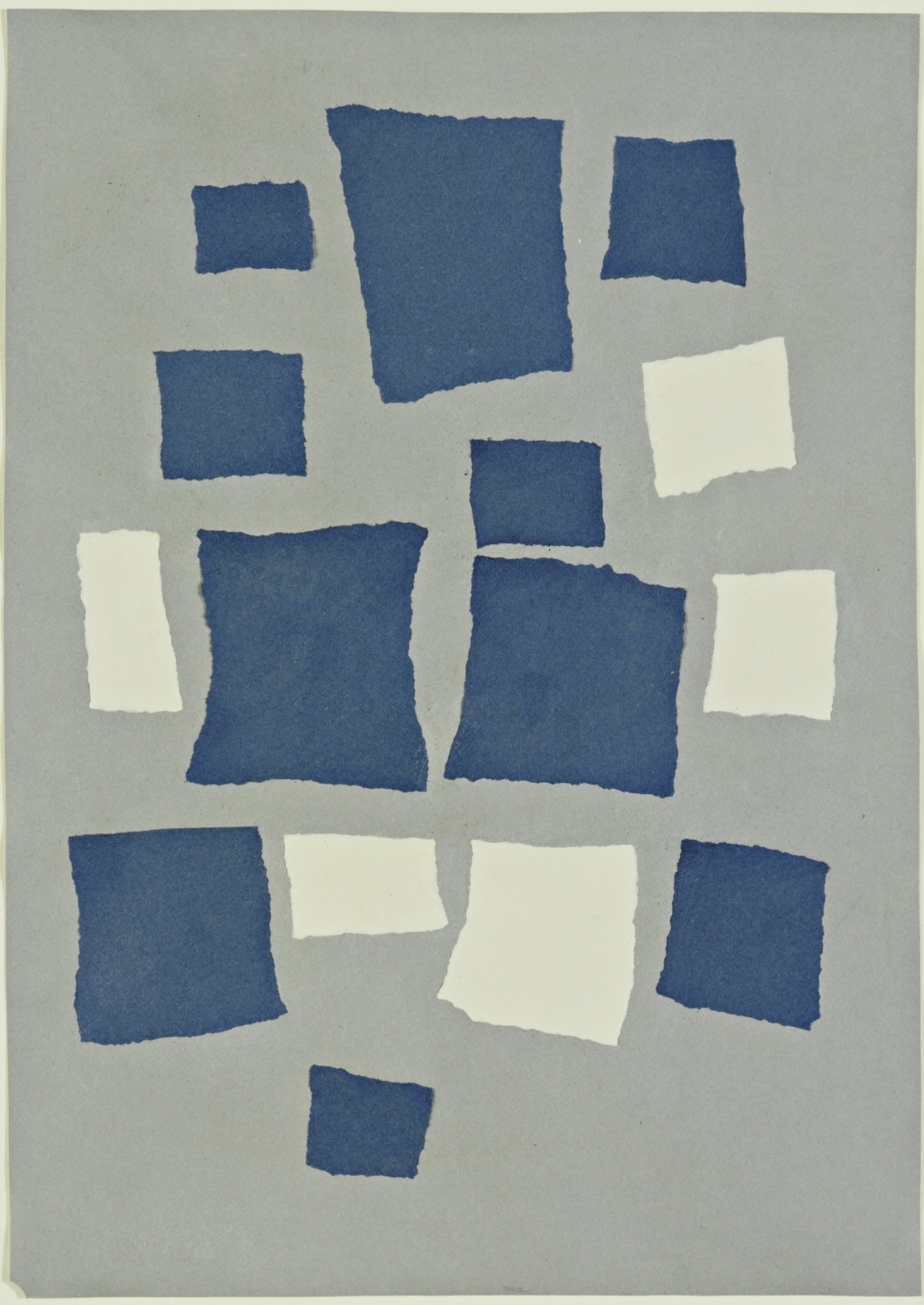
Today most people admire makers for their ability to control things: the materials they use; the techniques/processes of making; the composition or appearance of a work; and even the narratives or ideas that surround their work. However, after WWI the art movement Dada began to introduce the absurd and nonsensical as a critique on the rational thinking that they believed led to the Great War and the harsh realities of the modern world. Great artists of the time, such as Duchamp, began to introduce chance into their compositions and processes through automatism. Automatism is the performance of actions without conscious thought or intentions.
Jean Arp started to introduce chance operations into his compositions shortly after the war and continued to explore this idea for decades. He would often tear up pieces of paper and drop them on larger sheets of paper, gluing them down where ever they fell. Arp described chance operations in this way: “It is as if nature herself had formulated [her] own language of expression in the profound depths of consciousness.” Interestingly this sounds more like giving some compositional authority over to something beyond our complete understanding, something perhaps greater than the artist — in this case the forces of “nature.”
The work shown here, entitled Collage with Squares Arranged According to the Laws of Chance, is an interesting balance between control and relinquishing control. The colors are not determined by chance, nor is the size and proportion of the background sheet. Although the squares are not rationally placed, they do not overlap and are organized in vertical columns and centered on the underlying sheet of paper. The exact placement may be random but Arp is clearly retaining some control — controlling what I would call the rules of play and deep structure of the composition. I would argue no artist has complete control over their work.
The real question is what aspect of your work do you seek to control and when and how do you let go?
Regardless, relinquished control in the process of making art challenges traditional notions of authorship. Arp suggests artists should not seek attribution for their work and “remain anonymous, in the great workshop of nature, like the clouds, the mountains, the seas, the animals, and man himself. Yes! Man should go back to nature! Artists should work together like the artists of the Middle Ages.” It is interesting that Arp invokes the Middle Ages. This was a period dominated by Christian Art and Architecture when the church controlled almost every aspect of civil society. The individual artists remained anonymous, not due to poor record keeping but rather due to a spiritual idea about the role of the artist. The religious institutions at that time had little interest in the creation of original works. The emphasis was placed on retelling and embellishing historical narratives and honoring the Author of life itself.
